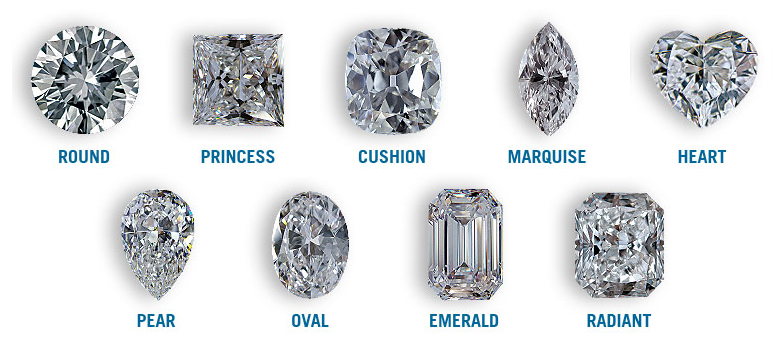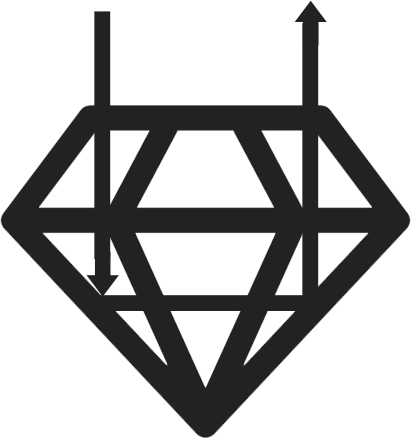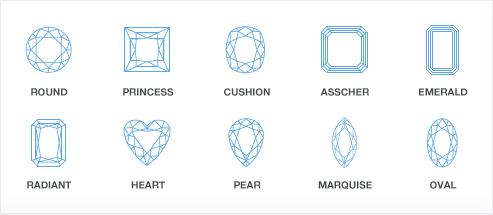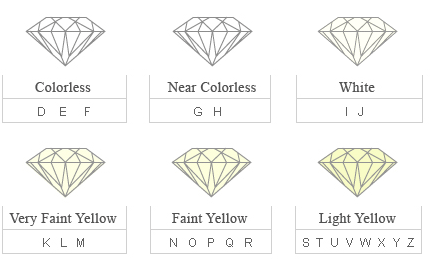Company Profile
WELCOME TO JANAM CORPORATION
Janam Corporation Pvt Ltd, meaning "birth," was founded by Chairman, Mr. Jasvant Parikh as a tightly integrated company. Specializing in the export of natural diamonds, Janam Corporation Pvt Ltd serves markets in the USA, Japan, Hong Kong, and Australia. The company sources its raw materials directly from reputed mining companies, ensuring the highest quality and authenticity of its diamonds.
Janam Corporation Pvt Ltd offers a wide range of stones, from 0.01ct to 0.18ct in loose parcels, and from 0.18ct up to 7ct in certified diamonds. Upholding its tradition of finding the best, Janam Corporation Pvt Ltd continues to maintain high standards in the diamond industry. The company's products are listed on various online portals as well as on its own website, making their exquisite diamonds accessible to a global clientele.
We believe in staying true to our customers by maintaining high integrity, transparency, and credibility. Aspiring to be the most trusted supplier of natural diamonds, the company is committed to provide diamonds in the most transparent way, ensuring customer trust and satisfaction.
Janam Corporation Pvt Ltd has adopted the RJC policies and procedures that documents its commitment to responsible business practices of RJC COP’s. The commitment to RJC includes policies on sourcing and human rights. All RJC policies and corresponding due diligence are available on request. E-mail request for the policy document/due diligence and any grievances related to sourcing policies and or provenance claims can be sent to admin_t@janamcorp.com
Product
Janam specializes in diamonds from 0.01 to 7 cts with wide range of Purity, Colors, Shapes and Sizes

| Certification | Shape | Size | Clarity | Color |
|---|---|---|---|---|
| Round, Marquise, Pears, Heart, Princess, Oval And Emerald. | 0.18 - 4.99 | IF-I2 | D - M | |
| Round, Marquise, Pears, Heart, Princess, Oval And Emerald. | 0.18 - 4.99 | IF-I2 | D - M | |
| NON-CERTIFIED | Round, Marquise, Pears, Princess | 0.01 - 2.99 | VVS- PK | (D-H), (I-J), (K-M), (N and below) |
Grading
-
About Diamonds
-
Cts.
Diamond Carat
-
Diamond Color
-
Diamond Clarity
-

Diamond Cut
Diamond Shapes

About Diamonds
It is important to have a good understanding of diamonds before you purchase one. We have outlined the basics to help guide you in your purchase. Learning about diamonds requires a simple knowledge of the "four Cs" - Cut, Clarity, Color and Carat. These are the criteria jewelers use when grading diamonds and these are the ones you will require in your search.
Diamond Anatomy
Diameter: The width of the diamond as measured through the girdle.
Table: This is the large, flat top facet of a diamond.
Crown: The upper portion of a cut gemstone, above the girdle.
Girdle: The narrow rim of a diamond that separates the crown from the pavilion. It is the largest diameter to any part of the stone.
Pavilion: The lower portion of the diamond, below the girdle. It is sometimes referred to as the base.
Culet: The tiny facet on the pointed bottom of the pavilion, which is the portion of a cut gem below the girdle.
Depth: The height of a gemstone, from the culet to the table.
Diamond Carat
A carat is a unit of measurement, it's the unit used to weigh a diamond. One carat is equal to 200 milligrams, or 0.2 grams
The word "carat" is taken from the carob seeds that people once used in ancient times to balance scales. So uniform in shape and weight are these little seeds that even today's sophisticated instruments cannot detect more than three one-thousandths of a difference between them.
[NOTE: Don't confuse "carat weight" with "karat," the method of determining the purity of gold.]
The process that forms a diamond happens only in very rare circumstances, and typically the natural materials required are found only in small amounts. That means that larger diamonds are uncovered less often than smaller ones. Thus, large diamonds are rare and have a greater value per carat. For that reason, the price of a diamond rises exponentially to its size.
Diamond color
“Color” refers to the presence or absence of color in white diamonds. Color is a result of the composition of the diamond, and it never changes over time.
Because a colorless diamond, like a clear window, allows more light to pass through it than a colored diamond, colorless diamonds emit more sparkle and fire. The formation process of a diamond ensures that only a few, rare diamonds are truly colorless. Thus the whiter a diamond's color, the greater its value.
[NOTE: Fancy color diamonds do not follow this rule. These diamonds, which are very rare and very expensive, can be any color from blue to green to bright yellow. They are actually more valuable for their color.]
To grade 'whiteness' or colorlessness, most jewelers refer to GIA's professional color scale that begins with the highest rating of D for colorless, and travels down the alphabet to grade stones with traces of very faint or light yellowish or brownish color. The color scale continues all the way to Z
What is Fluorescence?
Fluorescence is an effect that is seen in some gem-quality diamonds when they are exposed to long-wave ultraviolet light (such as the lighting frequently seen in dance clubs). Under most lighting conditions, this fluorescence is not detectable to the eye. While most gemologists prefer diamonds without this effect, some people enjoy it. It's really just a matter of aesthetics.

Diamond Clarity

When we speak of a diamond's clarity, we are referring to the presence of identifying characteristics on (blemishes) and within (inclusions) the stone. If you think about the incredible amount of pressure it takes to create a diamond, it's no surprise that most diamonds have flaws.
Basically there are two types of flaws: inclusions and blemishes. Inclusions refer to internal flaws and blemishes refer to surface flaws. However, in the diamond grades listed below, you'll note that none of the grades include the term "blemish" -- for the purposes of grading diamonds, all flaws are called "inclusions."
Inclusions include flaws such as air bubbles, cracks, and non-diamond minerals found in the diamond. Blemishes include scratches, pits, and chips. Some blemishes occur during the cutting processes (most often at the girdle). Diamonds with no or few inclusions and blemishes are more highly valued than those with less clarity because they are rarer.
Diamonds are graded for clarity under 10x loupe magnification. Grades range from Flawless (diamonds which are completely free of blemishes and inclusions), to Included 3 (diamonds which possess large, heavy blemishes and inclusions that are visible to the naked eye).
F
Flawless: No internal or external flaws. Extremely rare.
IF
Internally Flawless: no internal flaws, but some surface flaws. Very rare.
VVS1-VVS2
Very Very Slightly Included (two grades). Minute inclusions very difficult to detect under 10x magnification by a trained gemologist.
VS1-VS2
Very Slightly Included (two grades). Minute inclusions seen only with difficulty under 10x magnification.
SI1-SI2
Slightly Included (two grades). Minute inclusions more easily detected under 10x magnification.
I1-I2-I3
Included (three grades). Inclusions visible under 10x magnification AS WELL AS to the human eye. We do not recommend buying diamonds in any of these grades.
While the presence of these clarity characteristics (inclusions and blemishes) do lower the clarity grade of a diamond, they can also be viewed as proof of a diamond's identity. GIA certificates include what is known as a "plot" of a diamond's inclusions -- think of it as a "diamond fingerprint." Since no two diamonds are exactly the same, comparing the uniqueness of your diamond's clarity characteristics with the plot provided on the diamond certificate offers assurance that the diamond you pay for is the same diamond you receive.

Diamond Cut
First, don't confuse diamond "cut" with "shape." Shape refers to the general outward appearance of the diamond, (such as round, emerald, or pear) and “Cut” refers to the diamond's reflective qualities.
Diamond cut is perhaps the most important of the four Cs, so it is important to understand how this quality affects the properties and values of a diamond. A good cut gives a diamond its brilliance, which is that brightness that seems to come from the very heart of a diamond. The angles and finish of any diamond are what determine its ability to handle light, which leads to brilliance.
As shown in the images below, when a diamond is well-cut, light enters through the table and travels to the pavilion where it reflects from one side to the other before reflecting back out of the diamond through the table and to the observer's eye. This light is the brilliance we mentioned, and it's this flashing, fiery effect that makes diamonds so mesmerizing.
In a poorly cut diamond, the light that enters through the table reaches the facets and then 'leaks' out from the sides or bottom of the diamond rather than reflecting back to the eye. Less light reflected back to the eye means less brilliance.
Most gemologists agree that the best cut diamonds are those that follow a set of formula calculated to maximize brilliance. These formula can be seen in a diamond's proportions, most importantly how the depth compares to the diameter, and how the diameter of the table compares to the diameter of the diamond.
Because cut is so important, several grading methods have been developed to help consumers determine the cut of a particular diamond. In general, these grades are:
1. Excellent
2. Very Good
3. Good
4. Fair & Poor
Excellent
This cut is intended to maximize brilliance, and the typically smaller table sizes of these diamonds have the added benefit of creating a great deal of dispersion or 'fire' as well. Excellent quality diamonds are truly for the person who enjoys knowing that he has one of the finest things that money can buy. This category applies only to round diamonds.
Very Good
In the case of round diamonds, many Very Good Cut diamonds have cuts that are the equal of any Excellent Cut diamond, though they often can be purchased at slightly lower prices than Excellent Cuts. They are intended to provide maximum brilliance and fire. Like the Excellent Cut, these are also for the person who enjoys knowing that he has one of the finest things that money can buy.
Good
These diamonds reflect most of the light that enters them, creating a good deal of brilliance. With these diamonds, the cutters have chosen to stray slightly from the preferred diamond proportions in order to create a larger diamond. The result is that these diamonds fall slightly outside of some customers' preferences in terms of, for example, table size or girdle width, though, in many cases many of the parameters of diamonds in this range will overlap with certain parameters of diamonds in the Excellent or Very Good ranges. Generally, the price of these diamonds in slightly below that of Very Good cuts.
Fair & Poor
Diamond graded as fair or poor reflects only a small proportion of the light that enters it. Typically these diamonds have been cut to maximize the carat weight over most other considerations. Diamonds in this range offer an excellent cost-savings to customers who want to stay in a budget without sacrificing quality or beauty.
Events
| Show | Location | |
| {{data.EVENT_NAME}} | Subject: {{data.SUBJECT}} | |
| Date: {{data.FROM_DATE}} - {{data.TO_DATE}} | Message: {{data.MESSAGE}} | |
| No Event |



